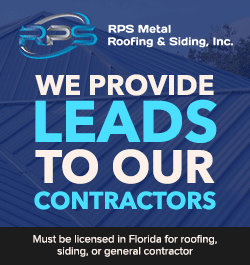UP TO THE MINUTE
Musculoskeletal Disorders Common in Roofing Industry

By John Kenney, Cotney Consulting Group.
Learn about the most common musculoskeletal disorders in the construction industry and how to avoid them.
Some 33% of all work-related injuries and illnesses in the construction industry are due to musculoskeletal disorders. These injuries involve repetitive movements and affect tendons, muscles, nerves, cartilage, joints, and supporting structures in the lower back, neck, legs, and arms.
The industry seeks solutions to this issue and new strategies to avoid musculoskeletal disorders.
Awkward body posture, heavy lifting and persistent grasping for extended periods cause these disorders. These debilitating musculoskeletal disorders can affect a construction worker's mental and physical health.
Most common for construction workers are neck strain, shoulder damage and back pain. They can lead to tendonitis, digital neuritis, tension neck syndrome, ligament sprain and muscle strain.
These disorders affect millions of construction workers worldwide and cost companies billions of dollars. They affect productivity in a big way.
The Laborer's Health & Safety Fund of North America reports that 40% of workers surveyed say they work while hurt, leading to more severe injuries in the future. And the U.S. Bureau of Labor Statistics reports that musculoskeletal disorders account for nearly 30% of all workers' compensation costs.
How to avoid injury
The U.S. Department of Labor's Occupational Safety and Health Administration, OSHA, defines musculoskeletal disorders as injuries or disorders of cartilage and spinal disks, tendons, joints, muscles and nerves.
There are ways to prevent these injuries, which need to be shared regularly with employees.
-
Proper stretches – Start a worksite flex and stretch program. It is a great opportunity for team communication and bonding while preparing workers for the day ahead.
-
Improve work techniques – Find new ways to complete jobs while decreasing risk factors. Use equipment such as carts, forklifts, dollies, and platforms to avoid injury.
-
Use personal protective equipment – Use PPE specifically designed to reduce the risk of injury. This can include back posture braces, vibration-reducing gloves, and knee and shoulder pads.
-
Provide training – Workers need to know the risk factors involved in getting musculoskeletal disorder before it happens. Train them in how to make ergonomic changes to prevent these injuries. Do not wait until it is too late.
Job rotation
Another technique that can be successful in the construction trades is job rotation and job task enlargement. This helps reduce repeated and sustained awkward body postures that lead to musculoskeletal disorders.
Have employees take counteractive stretch breaks. Such breaks allow them to counteract repeated and sustained awkward body positions and give their bodies some recovery time.
Common treatments
If an employee is already experiencing musculoskeletal disorders, there are common treatments:
-
Splints
-
Steroid injections
-
Physical therapy
-
Acupuncture
-
Chiropractic adjustment
-
Occupational therapy
-
Therapeutic massage
Many of these disorders can be prevented by reducing the amount of heavy, awkward, repetitive activities on the job. Take steps to minimize these injuries with proper training, including stretches, breaks, and job rotation.
About John Kenney
John Kenney is the Chief Executive Officer at Cotney Consulting Group. Prior to starting Cotney, John had 45 years of experience in the construction industry. John began his career by working as a roofing apprentice at a family business in the Northeast. Because of his skill and hard work, he progressed from roofing laborer to foreman, estimator, chief estimator, Vice President, and Chief Operating Officer with his various companies. John has worked for multiple Top 100 Roofing Contractors and is intimately familiar with all aspects of roofing production, estimating, and operations. In his last role, John was responsible for the daily operations and performance of a large commercial roofing contractor. During his tenure, John ran business units associated with delivering excellent workmanship and unparalleled customer service while ensuring healthy net profits for his company.
















Comments
Leave a Reply
Have an account? Login to leave a comment!
Sign In